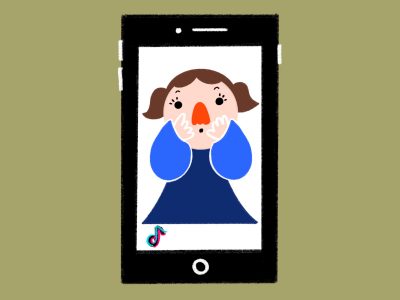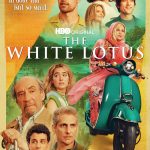I’ve always been annoyed by how people discuss plastic surgery, because these conversations are often circular.

Controversy surrounds influencers who have been reluctant to discuss their alleged surgeries, such as Bella Hadid and Madison Beer. People believe these celebrities set unrealistic beauty standards by refusing to admit they’ve had work done.
All over the internet — from Instagram pages to Reddit forums — people dig up images of what celebrities used to look like versus what they look like now. These Instagram accounts claim their work is noble — if girls see that celebrities surgically enhanced their features to achieve beauty, then they will feel less self conscious.
But I find no comfort in knowing someone has taken great pains to be beautiful. In fact, it exhausts me, because it means beauty is attainable to anyone who has the means.
Instead of accepting whatever God-given ugliness I possess, I must instead face the reality that beauty would be within reach if not for financial barriers.
But what exactly is beauty in this day and age?
We are all familiar with the “Instagram face,” a physical appearance Jia Tolentino described in The New Yorker as “distinctly white but ambiguously ethnic.” The Instagram face is perhaps the most sought-after societal beauty standard of our time.

Of course, not all conventionally beautiful people have this face, but there’s no denying pretty people tend to look a certain way.
The Instagram face shows a new evolution in Western society’s beauty standards as it both fetishizes certain ethnic features while simultaneously excluding people of color from the narrative.
For instance, Kylie Jenner’s makeup in her recent ad campaign emphasized traditional Arab features, and her eye makeup in particular appropriated a typical Arab style. I’m not saying people such as Kylie Jenner cannot wear this kind of eye makeup, but she chose a specific Arab feature to emulate and left out the rest.
To many, it may be obvious why: Big noses — a stereotypical Arab feature — are ugly in the eyes of Western society.
It’s a message we receive as early as children — many Disney villains share a prominent, crooked nose. Regardless of Disney’s intentions, big noses are culturally associated with ugliness and evil.
Depicting their villains with a crooked nose also stems from a long legacy of racism and antisemitism as anti-semitic propaganda often vilified Jewish people by portraying them with a hooked nose.
Let’s also take the side profile challenge on TikTok: Users flip their hair and show off their side profile to the tune of Avril Lavigne’s “Girlfriend.” The point of this challenge is to flaunt how small and perfect their noses are.
People with big noses took part in the trend too, but their participation was rare. I even saw a girl with a slight bump on her nose stop mid-way through the challenge to rub her nose and frown.
Even if they seemed happy, I’d occasionally go to their profile and find an artfully-crafted TikTok of them lip-synching during their rhinoplasty.
I’m fully in favor of people doing what they want with their bodies, but I can’t help feeling sad whenever I see a girl with a big nose carve it down to some boring ski slope.
This is why conversations about plastic surgery go nowhere. The women who keep their rhinoplasties secret are not the ones setting a false standard of beauty. Beauty itself is a false standard. It’s a ridiculous rule people rewrite every couple of years.
The Instagram face is proof of how arbitrary the definition of beauty is. White women pick and choose certain features to be “in” and discard the rest without empirical reasoning.
Why are big noses labeled as ugly? The small, beautiful noses I keep seeing on TikTok all look the same — singular, finite and boring. After the fourth or fifth time of seeing Barbie show me how her lower peripheral vision was not significantly imparied by the size of her nose, I got pretty tired of it.
At least big noses have character and variety. Some are triangular and sharp, while others are wayward cliffs looking out on a lonely sea. Some are curved, and others point toward the sky like lost angels. Big noses are marvels of architecture, tiny cathedrals poised carefully on your face, lone archipelagos floating between your eyes. Who would want to give that up?
“Beauty is, in some ways, boring. Even if its concept changes through the ages, nevertheless a beautiful object must always follow certain rules … Ugliness is unpredictable and offers an infinite range of possibilities. Beauty is finite. Ugliness is infinite, like God,” wrote author Umberto Eco in his book “On Ugliness.”
I think Eco’s point also applies to the way beauty is racialized. In a society in which whiteness is viewed as the norm, the standard of beauty is calibrated to celebrate Eurocentric features. Deviations from this norm are deemed ugly because they deviate from whiteness.
The modern Western beauty standard is built on racism and anti-semitism.
I don’t know what would be better — to find joy in ugliness or do away with the concepts of beauty and ugliness altogether.
There will always be a human instinct to gravitate toward attractive features. This gravitational pull, however, should not be based around Eurocentric standards of beauty.
Our definition of beauty is subjective, and it can grow and change to include a diverse range of features, traits and ethnicities.
The first step is to get rid of the seemingly harmless trends that perpetuate Eurocentric beauty — they’re clogging up my “For You page.”




